NANOMAT: Committed to nanotechnology
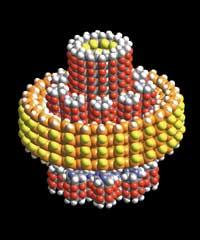
The main objective of the project is to promote research in nanotechnology for its application in the framework of new materials. Four research groups will participate and work together. The project, coordinated by a team from the LABEIN technology centre, will be attended by several groups from the POLYMAT institute, the INASMET technology centre and the Donostia International Physics Centre (DIPC).
Why nanotechnology?
Molecular devices or structures have begun to be used in different areas. For example, microelectronics has been a very innovative field. In the 20th century, however, the industry has competed to make electric circuits smaller and smaller; within a few years, nanoelectronics will occupy the place that microelectronics currently occupies.
However, this is not right now, scientists investigate the basic science needed for the development of nanotechnology. However, it does not seem that the commercialization of nanotechnology will be prolonged, so western governments are making large investments in this field. There is no time to waste, now we must encourage nanotechnology to compete in the future market. In this area, the Basque Government is no exception.
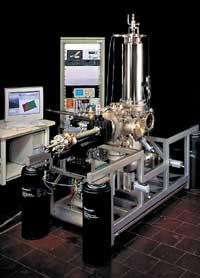
However, the difficulty of this work is that, in reality, nanotechnology teams are very limited, both here and globally. The teams of more than twenty researchers are very few. In addition, nanotechnology requires the collaboration of scientists from different fields: physicists, chemists, biologists, geologists, engineers, etc. Only thus can synthesis, characterization, application search and all aspects of nanostructure research be integrated.
And if they are not grouped into one group, the solution is to coordinate the groups in each area in one project. To do this, the Basque Government has created the ETORTEK programme. Through the programme, in addition to the collaboration of the groups, the aim is to integrate projects working in the Autonomous Community of the Basque Country into the European research network.
Tiny materials
NANOMAT is a multi-sectoral application nanomaterials project and each participating company has a specific responsibility.
The LABEIN team, on the one hand, coordinates the work and, on the other, analyzes its possible applications in the field of construction. However, his interest is in many cases broader, since the one that has application in one area is the one developed in research in another area. Therefore, the objective of the NANOMAT project is the research of materials applicable to different sectors.
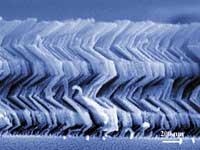
"On many occasions, research is not focused on a particular sector, even if it has applicability in it," says Antonio Porro, LABEIN employee and project manager NANOMAT. "However, we must recognize that construction related applications within the NANOMAT project have a great weight."
Four centres collaborate
Each participating center brings its own characteristics to the project. The DIPC conducts a theoretical study of the physics of nanoparticles, that is, the behavior of these nanomaterials is analyzed from the point of view of quantum mechanics. These theoretical calculations allow analyzing the characteristics and reactivity of the materials. This step is essential to know what happens at nanometric scale and then try to extrapolate what will happen at macroscopic level.
In the INASMET technology center different works will be carried out, among which the synthesis of nanoparticles can be highlighted, that is, the elaboration of nanomaterials that will be the subject of experimental research. Among other things, the nanotubes now so used are synthesized and characterized in this center.
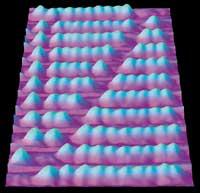
The mission of the POLYMAT Institute is to prepare matrices that are used as the basis of the project. In fact, the experts of this institute investigate polymers, that is, giant molecules adaptable to many applications.
The nanostructures and matrices synthesized in INASMET and POLYMAT are assembled together in the LABEIN center, where at the end of the 'chain' the materials to be investigated are completed. Depending on the characteristics required for each material, it is necessary to modify the basic matrix, the reinforcement structures or the nanomaterials themselves.
NANOMAT is therefore a project that aims to promote nanotechnology in the field of materials. It is a clear bet on the strategy of the Basque Government. It is possible that in a few years these investigations begin to bear fruit in Basque companies.
Usually, seasonal industry revolutions can be described depending on the evolution of certain technologies. To do this, U.S. Congressman Newt Gingrich proposed a method: analysis of evolutions in s. In short, these s-shaped curves are the result of comparing the investment and economic performance that the evolutions of the technologies that intervene in the market imply.
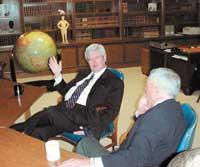
In the first phase, investment is not profitable, since money is not intended for applications, while in the development phase the application is available and small investments report a high economic yield, in the last phase, although very important investments are made, hardly profits are obtained. In general, for the start of a new technology, the previous technology is in the final phase, as the revolutions in the market happen.
Nanotechnology has broken this scheme: its predecessor, information technology, its first phase towards 1960, when the second industrial revolution was ending. It is now growing, in the second phase of the s. However, the first steps of nanotechnology are also underway before ending the previous one, since nanotechnology directly affects previous technologies.
Currently, in general, two definitions are used. On the one hand, nanotechnology is the ability to realize materials, devices and systems by controlling matter on a nanoscopic scale (size of molecules). The second definition consists in the exploitation of the properties and phenomena of matter at this level. Both definitions are different, vary significantly in each case depending on their use and destination. The work of some groups conforms to the first, while that of others, such as NANOMAT, coincides with the second definition. |
Buletina
Bidali zure helbide elektronikoa eta jaso asteroko buletina zure sarrera-ontzian











